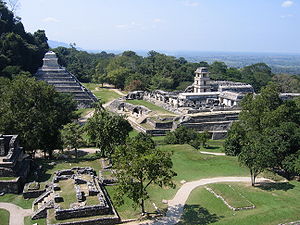The 610s decade ran from January 1, 610, to December 31, 619.
The 660s decade ran from January 1, 660, to December 31, 669.
The 550s decade ran from January 1, 550, to December 31, 559.
The 580s decade ran from January 1, 580, to December 31, 589.
The 590s decade ran from January 1, 590, to December 31, 599.

Year 602 (DCII) was a common year starting on Monday of the Julian calendar. The denomination 602 for this year has been used since the early medieval period, when the Anno Domini calendar era became the prevalent method in Europe for naming years.

Year 587 (DLXXXVII) was a common year starting on Wednesday of the Julian calendar. The denomination 587 for this year has been used since the early medieval period, when the Anno Domini calendar era became the prevalent method in Europe for naming years.
Year 615 (DCXV) was a common year starting on Wednesday of the Julian calendar. The denomination 615 for this year has been used since the early medieval period, when the Anno Domini calendar era became the prevalent method in Europe for naming years.

Year 617 (DCXVII) was a common year starting on Saturday of the Julian calendar. The denomination 617 for this year has been used since the early medieval period, when the Anno Domini calendar era became the prevalent method in Europe for naming years.

Year 598 (DXCVIII) was a common year starting on Wednesday of the Julian calendar. The denomination 598 for this year has been used since the early medieval period, when the Anno Domini calendar era became the prevalent method in Europe for naming years.

Year 595 (DXCV) was a common year starting on Saturday of the Julian calendar. The denomination 595 for this year has been used since the early medieval period, when the Anno Domini calendar era became the prevalent method in Europe for naming years.

Year 582 (DLXXXII) was a common year starting on Thursday of the Julian calendar. The denomination 582 for this year has been used since the early medieval period, when the Anno Domini calendar era became the prevalent method in Europe for naming years.
Bayan I reigned as the first khagan of the Avar Khaganate between 562 and 602.
Petrus (Greek: Πέτρος, Petros, also known as Peter in English was a brother of the Byzantine Emperor Maurice.
Maurice's Balkan campaigns were a series of military expeditions conducted by Roman Emperor Maurice in an attempt to defend the Balkan provinces of the Roman Empire from the Avars and the South Slavs. Maurice was the only East Roman emperor, other than Anastasius I, who did his best to implement determined Balkan policies during Late Antiquity by paying adequate attention to the safety of the northern frontier against barbarian incursions. During the second half of his reign, the Balkan campaigns were the main focus of Maurice's foreign policies, as a favourable peace treaty with Persian Empire in 591 enabled him to shift his experienced troops from the Persian front to the region. The refocusing of Roman efforts soon paid off: the frequent Roman failures before 591 were succeeded by a string of successes afterwards.
Comentiolus was a prominent Eastern Roman (Byzantine) general at the close of the 6th century during the reign of Emperor Maurice. He played a major role in Maurice's Balkan campaigns, and fought also in the East against the Sassanid Persians. Comentiolus was ultimately executed in 602 after the Byzantine army rebelled against Maurice and Emperor Phocas usurped the throne.
Priscus or Priskos was a leading Eastern Roman general during the reigns of the Byzantine emperors Maurice, Phocas and Heraclius. Priscus comes across as an effective and capable military leader, although the contemporary sources are markedly biased in his favour. Under Maurice, he distinguished himself in the campaigns against the Avars and their Slavic allies in the Balkans. Absent from the capital at the time of Maurice's overthrow and murder by Phocas, he was one of the few of Maurice's senior aides who were able to survive unharmed into the new regime, remaining in high office and even marrying the new emperor's daughter. Priscus, however, also negotiated with and assisted Heraclius in the overthrow of Phocas, and was entrusted with command against the Persians in 611–612. After the failure of this campaign, he was dismissed and tonsured. He died shortly after.
The 600s decade ran from January 1, 600, to December 31, 609.

The Battles of Viminacium were a series of three battles fought against the Avars by the Eastern Roman Empire. They were decisive Roman successes, which were followed by an invasion of Pannonia.

The Avar–Byzantine wars were a series of conflicts between the Byzantine Empire and the Avar Khaganate. The conflicts were initiated in 568, after the Avars arrived in Pannonia, and claimed all the former land of the Gepids and Lombards as their own. This led to an unsuccessful attempt to seize the city of Sirmium from Byzantium, which had previously retaken it from the Gepids. Most subsequent conflicts came as a result of raids by the Avars, or their subject Slavs, into the Balkan provinces of the Byzantine Empire.








